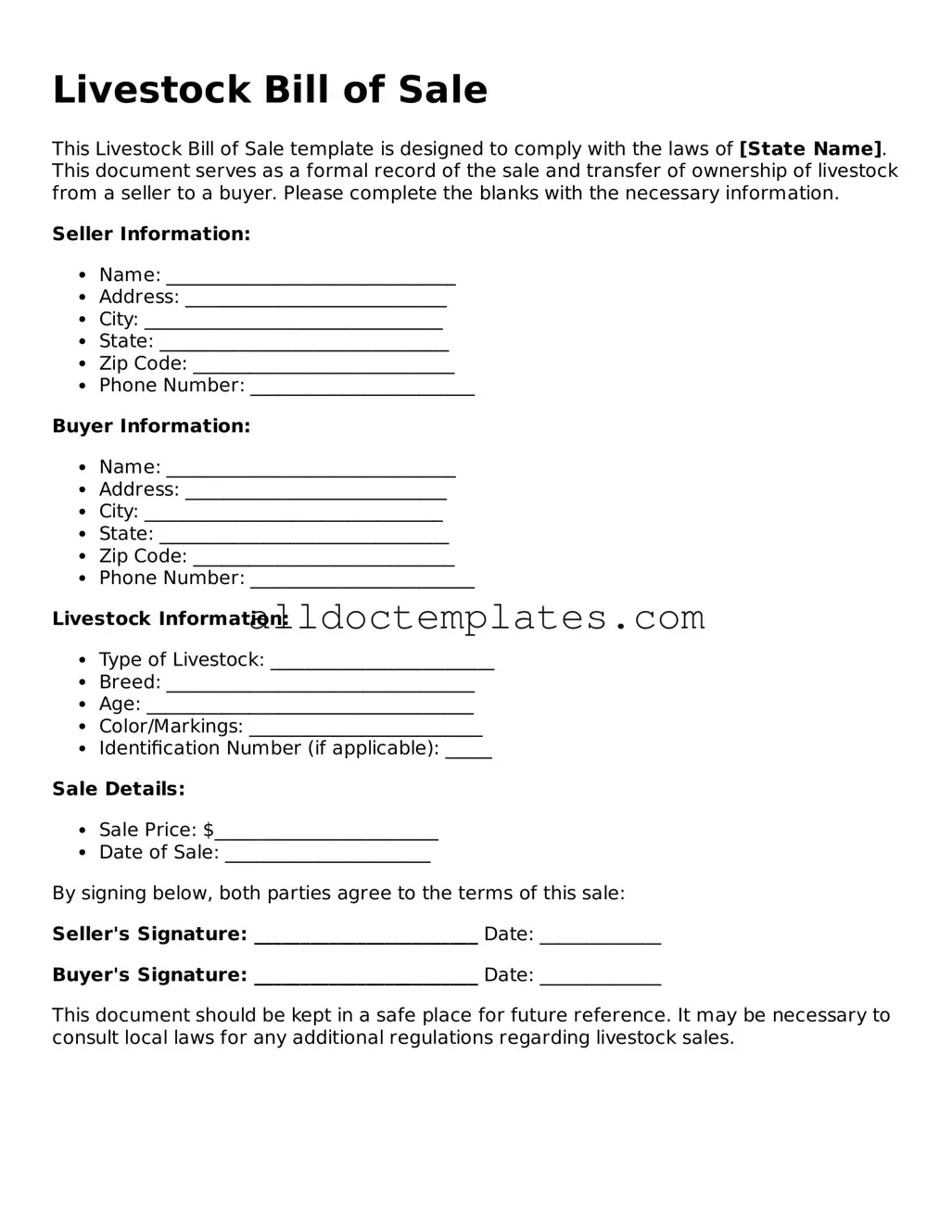Livestock Bill of Sale
This Livestock Bill of Sale template is designed to comply with the laws of [State Name]. This document serves as a formal record of the sale and transfer of ownership of livestock from a seller to a buyer. Please complete the blanks with the necessary information.
Seller Information:
- Name: _______________________________
- Address: ____________________________
- City: ________________________________
- State: _______________________________
- Zip Code: ____________________________
- Phone Number: ________________________
Buyer Information:
- Name: _______________________________
- Address: ____________________________
- City: ________________________________
- State: _______________________________
- Zip Code: ____________________________
- Phone Number: ________________________
Livestock Information:
- Type of Livestock: ________________________
- Breed: _________________________________
- Age: ___________________________________
- Color/Markings: _________________________
- Identification Number (if applicable): _____
Sale Details:
- Sale Price: $________________________
- Date of Sale: ______________________
By signing below, both parties agree to the terms of this sale:
Seller's Signature: ________________________ Date: _____________
Buyer's Signature: ________________________ Date: _____________
This document should be kept in a safe place for future reference. It may be necessary to consult local laws for any additional regulations regarding livestock sales.
